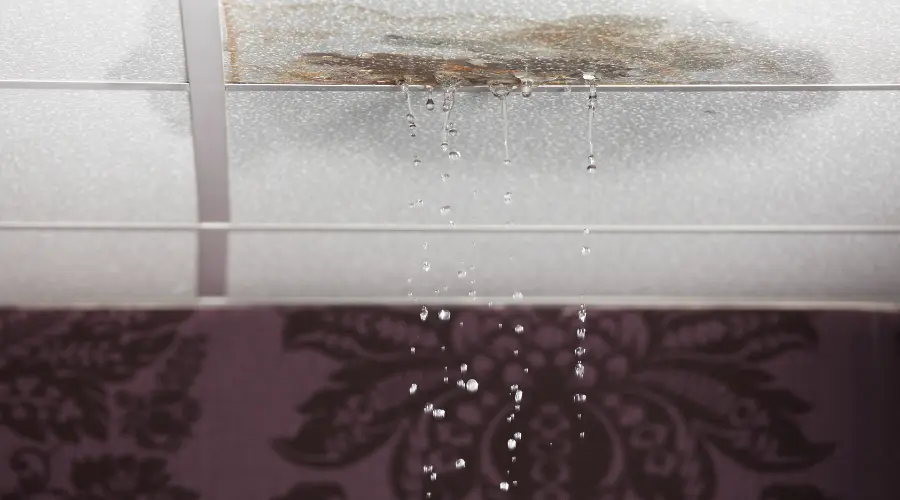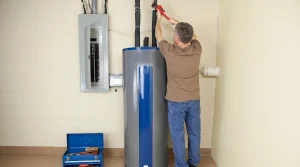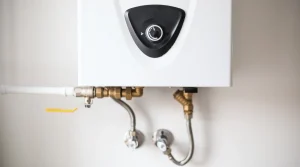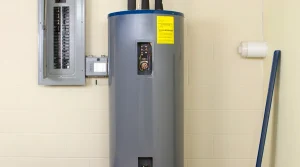Water leaks might seem like minor inconveniences, but they can silently cause devastating damage to your home’s structure, create perfect conditions for hazardous mold growth, and lead to shockingly expensive repair bills. The most dangerous leaks are the ones you can’t easily see – hidden behind walls, under floors, or within your foundation.
Is your home secretly harboring a water leak right now? The answer might surprise you.
In this comprehensive guide, we’ll reveal the subtle warning signs of hidden water leaks, share professional detection methods, and explain what steps to take if you discover a problem.
The True Cost of Ignoring Hidden Water Leaks
Before we dive into detection methods, let’s understand what’s at stake:
- The average household leak wastes nearly 10,000 gallons of water annually – enough to fill a swimming pool
- Water damage claims average $11,000 per household
- Untreated leaks can reduce property values by 15-25%
- Mold caused by hidden moisture can begin growing within 24-48 hours
- Insurance may not cover damage from neglected maintenance issues
14 Warning Signs of Hidden Water Leaks
1. Unexplained Increases in Water Bills
A sudden spike in your water bill without a corresponding increase in usage is often the first red flag of a hidden leak. Compare your current bills with the same period from previous years to identify unusual patterns.
2. Mysterious Sounds in Your Plumbing
Listen carefully for:
- Hissing sounds when no water is running
- Dripping noises behind walls
- Gurgling in drains or toilets
- Water running sounds when fixtures aren’t in use
3. Musty, Damp Odors
That distinctive musty smell isn’t just unpleasant – it’s your home warning you about hidden moisture. These odors are particularly concerning when they persist in areas like:
- Basements
- Crawl spaces
- Areas around plumbing fixtures
- Inside cabinets beneath sinks
4. Discolored or Stained Walls and Ceilings
Water stains typically appear as yellowish or brownish discolorations on:
- Ceilings (especially beneath bathrooms)
- Walls (particularly around plumbing lines)
- Around window frames
- In corners where walls meet
These stains may start small but gradually expand as the leak continues.
5. Peeling or Bubbling Paint and Wallpaper
When water accumulates behind painted surfaces or wallpaper, it breaks the bond between the material and the wall. Look for:
- Bubbling or blistering paint
- Wallpaper coming loose from the wall
- Textured paint that suddenly appears smooth in spots
6. Warped or Damaged Flooring
Water seeking the lowest point will often affect your flooring. Watch for:
- Laminate or engineered wood that’s buckling
- Hardwood planks with raised edges (cupping)
- Unexplained soft spots in subfloors
- Loose tiles or grout
- Vinyl flooring that’s curling at the edges
7. Visible Mold Growth
Mold requires moisture to grow, making it a reliable indicator of hidden water issues. Be concerned about:
- Black, green, or white spotting on walls
- Mold appearing in corners of rooms
- Growth around baseboards
- Mold behind furniture placed against exterior walls
8. Wet or Damp Spots
Persistent dampness that can’t be explained by spills or condensation should always be investigated. Pay attention to:
- Damp carpet or rugs
- Wet spots that reappear after drying
- Dampness around plumbing fixtures
- Moist areas on concrete slabs
9. Structural Cracks
As water undermines your home’s structural integrity, cracks may appear in:
- Foundation walls
- Interior drywall, especially around doorways
- Exterior brick or siding
- Ceiling joints
10. Sagging Ceilings or Soft Drywall
Water accumulation above ceilings or inside walls eventually causes materials to lose strength. Watch for:
- Drywall that feels soft when pressed
- Ceilings that appear to droop or bulge
- Walls that feel spongier than surrounding areas
11. Increased Indoor Humidity
Hidden leaks can raise the overall moisture content in your home’s air. Signs include:
- Foggy windows
- Condensation on cold surfaces
- Consistent humidity readings above 60%
- Feeling of dampness even with air conditioning running
12. Excessive Mildew in Bathrooms
While some mildew in high-moisture areas is normal, excessive or rapidly returning mildew may indicate a leak behind tiles or under fixtures.
13. Foundation Issues
Water can undermine your home’s foundation, causing:
- Uneven floors
- Doors that stick or won’t close properly
- Windows that become difficult to open
- Widening cracks in foundation walls
14. Unusual Plant Growth or Soil Conditions
Outdoor leaks often reveal themselves through:
- Unusually lush patches of grass
- Sunken areas in your yard
- Pooling water during dry weather
- Soil erosion around your foundation
Professional Methods to Detect Hidden Water Leaks
Water Meter Testing
This simple test can confirm whether you have a leak somewhere in your system:
- Turn off all water-using appliances and fixtures in your home
- Locate your water meter and note the exact reading
- Avoid using any water for 2-3 hours
- Check the meter again – any movement indicates a leak
Moisture Meter Assessment
Professional plumbers use specialized moisture meters to:
- Measure moisture content in walls, floors, and ceilings
- Identify areas with abnormally high readings
- Track the source of leaks by following moisture patterns
Infrared Thermal Imaging
This advanced technology allows professionals to:
- “See” temperature differences caused by moisture
- Identify leak locations without demolition
- Document the extent of water intrusion
- Find leaks in hard-to-reach areas
Acoustic Leak Detection
Specialized listening equipment can:
- Detect the sound of water escaping from pressurized pipes
- Pinpoint leak locations behind walls or underground
- Find leaks too small to trigger obvious symptoms
Dye Testing
This method helps identify leaks in specific fixtures:
- Add food coloring to your toilet tank
- Wait 30 minutes without flushing
- If color appears in the bowl, your toilet’s flapper valve is leaking
What to Do If You Suspect a Hidden Water Leak
- Document Everything: Take photos of all visible signs and keep records of unusual water bills.
- Shut Off Water If Necessary: For major leaks, know where your main water shut-off valve is located.
- Contact Professional Help: Hidden leaks require specialized detection methods and proper repairs to prevent recurrence.
- Check Your Insurance: Review your homeowner’s policy to understand what water damage might be covered.
- Address Secondary Damage: Once the leak is fixed, ensure all affected materials are properly dried or replaced to prevent mold growth.
Preventive Measures to Avoid Future Water Leaks
✓ Schedule annual plumbing inspections ✓ Replace washing machine hoses every 3-5 years ✓ Install water leak detection devices near high-risk appliances ✓ Maintain proper drainage around your foundation ✓ Regularly check the seals around sinks, tubs, and showers ✓ Keep gutters clean and functioning properly ✓ Monitor water pressure (excessive pressure strains pipes) ✓ Insulate pipes in unheated areas to prevent freezing and bursting
When to Call the Professionals
While DIY detection methods can identify the presence of leaks, locating and properly repairing hidden leaks requires professional expertise. You should contact a licensed plumber when:
- Your water bill suddenly increases without explanation
- You’ve confirmed a leak using the water meter test
- Multiple warning signs are present
- You can hear water running but can’t locate the source
- Previous repair attempts haven’t resolved the issue
Don’t wait until minor leaks become major disasters. Proactive detection and timely repairs are your best defense against costly water damage.
Conclusion: Stay Vigilant Against Hidden Water Leaks
Hidden water leaks represent a serious threat to your home’s structural integrity, your family’s health, and your financial well-being. By familiarizing yourself with the warning signs and taking prompt action when leaks are suspected, you can prevent minor problems from escalating into catastrophic damage.
Remember that professional assessment is the most reliable way to locate and properly repair hidden leaks. The cost of inspection is minimal compared to the potential expense of major water damage restoration.
Is your home showing any of the warning signs we’ve discussed? Don’t take chances with something as potentially devastating as hidden water damage.
For expert leak detection and plumbing services, contact Plumbing Clifton today at (973) 858-5005 or visit www.plumbingclifton.com for more information.




